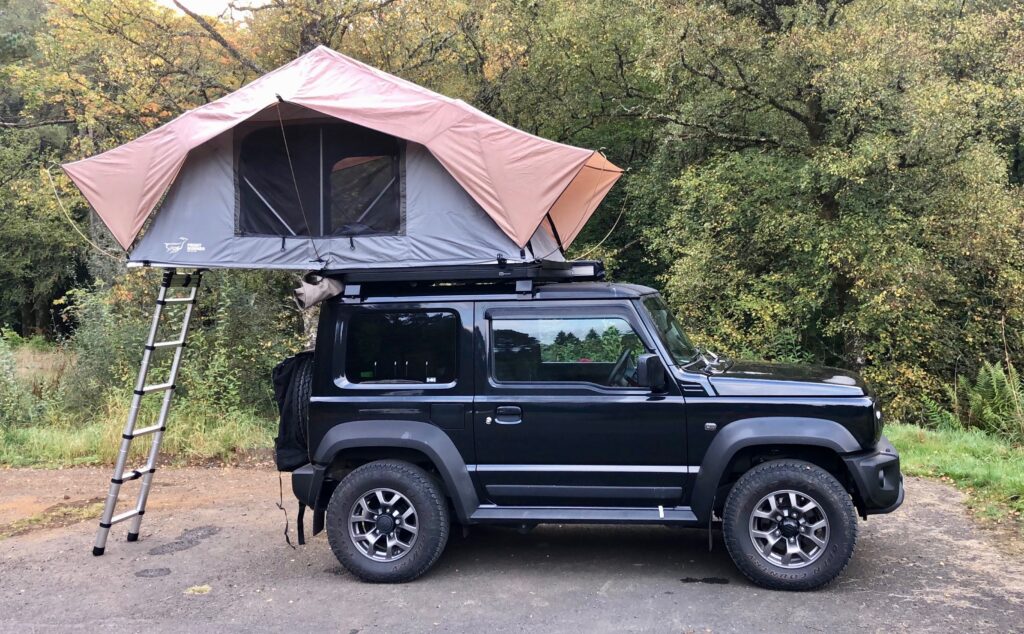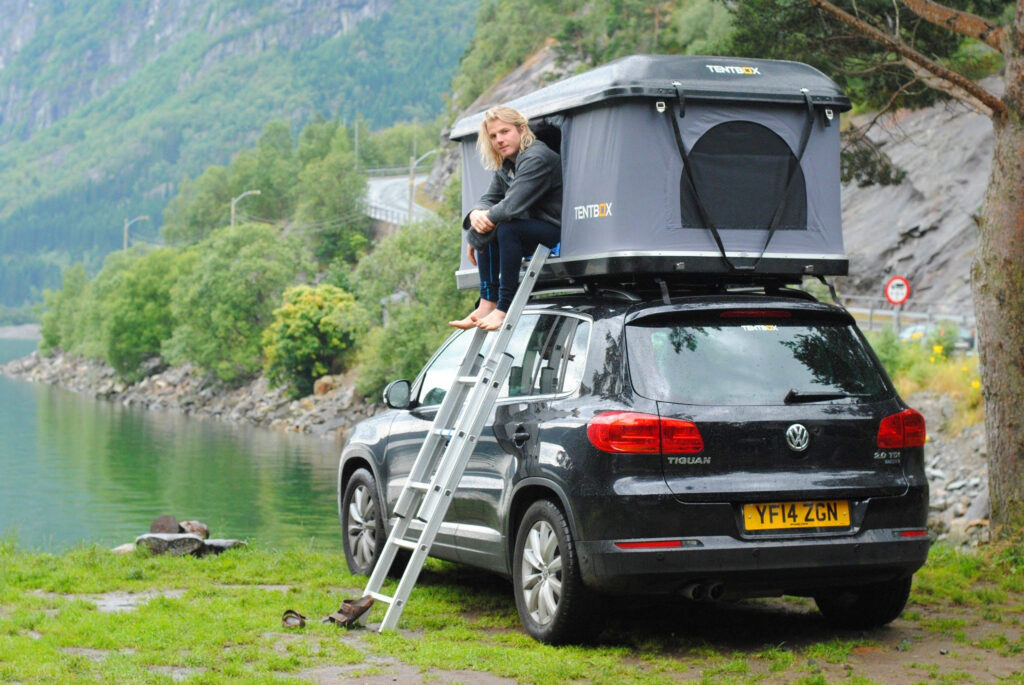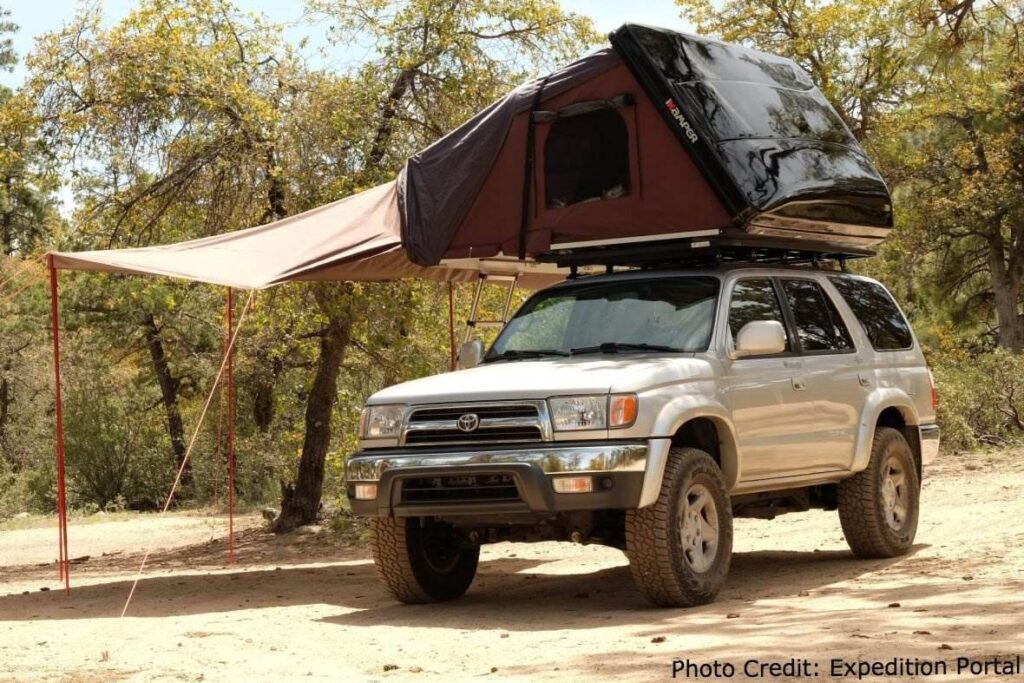The use of rooftop tents as a kind of camping accommodation is becoming increasingly common. Only roof rails mounted on the car will allow us to attach the roof tent, but this is the only major prerequisite for installing a roof tent.
With the convenience of a Roof Top Tent, you can set up camp just about any place. You won’t have to worry about setting up camp in a swampy or muddy area. You need never worry about finding a good site to camp again because you already have one on top of your car.
This article will explain whether the rooftop tents are stable.
Here’s a quick answer to the question, “Is a rooftop tent stable?”
Rooftop tents are very stable when mounted correctly on the vehicle! Modern rooftop tents are also designed for extreme weather conditions. A good rooftop tent can also withstand heavy rain or storms.
Sleeping or staying in a rooftop tent is extremely safe, as the rooftop tent is firmly connected to the vehicle’s roof crossbars.
Rooftop tents are made from high-strength materials that make it almost impossible to damage or degrade the structure of a rooftop tent through normal use.
Table of Contents
Are rooftop tents secure or stable?
Rooftop tents may appear unstable to those unfamiliar with them, yet they are actually quite stable. Stability is provided by the roof rack system. To maintain the security of your roof rack system, you’ll need a stable roof rack with cross bars. You probably sound obstinate or, better yet, like an outdoor purist at this point.

But as the outdoor community develops at an alarming rate, so are the number of newcomers who believe they require the most advanced equipment available. A rooftop tent is not the solution to a lack of protection, comfort, or experience. When you use a conventional tent, car camping, road vacations, and even dispersed camping are all enjoyable activities. Even for those of us who are not concerned with being kidnapped by baboons, RTT has several benefits to terrestrial shelter.
Roof sleepers require merely a level parking spot, as opposed to a patch of smooth dirt for a typical tent. It makes little difference if the soil is rocky, murky, or full of roots. On the pavement, on melting snow, or in standing water, camping is possible. Rooftop tents are constructed with robust, water-resistant body fabrics (often polyester/cotton blends) and entirely waterproof rain.
Why rooftop tents are stable
When viewed from the outside, a rooftop tent doesn’t appear to be all that stable. On the other hand, a rooftop tent is exceptionally secure due to the fact that it is attached to the roof bars of the car in a highly robust manner. A rooftop tent has a very stable structure or construction since it is elevated above the ground.

Is a Roof Tent stable in wind/storm?
Yes, the rooftop tent is stable in rain or storms. The construction of rooftop tents does make them very durable. Additionally, as they are typically constructed out of hardy materials such as aluminum or ABS plastic, they are excellent at withstanding the elements like wind and precipitation. Because of all of these qualities, they are rather famous for off-roading and Overlanding journeys. In addition, certain RRT can be used as a cargo boxes, which can be useful for storing additional items or for use during the off-season.
A rooftop tent does really have the ability to withstand severe winds quite well. The fact that a rooftop tent may be put on a vehicle or trailer is one of the benefits of using one. Because of this, the rooftop tent is directly fixed to a substantial object, making it more resistant to being blown over. It is essential that the rooftop tent be properly attached to the automobile or truck/van. Make sure the rooftop tent you purchased is installed correctly using the appropriate mounting supplies.
During gusts of wind, both the automobile and the tent atop the roof will rock significantly. This may appear counterintuitive, but keep in mind that it takes a significant amount of wind pressure to topple a car that has a tent installed on the roof of it. When the wind is blowing at these rates, it is important to carefully position the rooftop tent with respect to the wind.
How is the rooftop tent connected to the vehicle?
Installing the rooftop tent onto your car is the first step that must be taken before you can go camping. Although every rooftop tent is unique in its construction and the manner in which it is erected, most tents are erected according to the following steps:
1. Position the tent so that it is atop the roof rack of your vehicle and then slide it into position.
2. Fasten the mounting hardware that was provided to the tent so that it is secure.
Obviously, the manual that came with your particular tent is the best place to look for more detailed instructions. The newest models of Thule rooftop tents come equipped with quality mounting brackets that make it incredibly simple to set up the tent on your roof racks in only four minutes, which is less than half the amount of time required to set up the majority of conventional tents. This new mounting gear additionally locks the tent to your roof racks, providing an additional layer of protection against theft.
Is it dangerous to sleep in a Roof Tent?
No, it’s not dangerous to sleep in an RTT. There are a lot of advantages that come along with sleeping in an RTT. You are sleeping off the ground, which puts you further away from insects, vermin, and camp neighbors who are nosy while also bringing you closer to the stars. Every time you set up camp, you are doing so on a surface that is completely level. Traditionally, the rooftop tent has been utilized as a means of protecting campers from snakes and other ground-dwelling creatures that have the potential to disrupt a camping trip. This is because these animals pose a threat to campers’ health. Putting up a tent that is elevated off the ground is supposed to protect campers from the weather, but only if the tent is erected in a secure manner.
Rooftop tents are just as safe as ground-based tents provided that they are of sufficient size, fastened to the vehicle properly, and do not have an excessive amount of people or equipment inside of them. Their higher elevation provides extra safety advantages, particularly with regard to animal accumulations and water.
Conclusion
If properly sized, placed, and not crowded with people and stuff, a rooftop tent is just as safe as a tent set up on the ground. Since they are higher up, they are protected from both animals and flooding. You won’t have any problems as long as you know what your automobile can handle and how to safely attach your tent to the top of your vehicle.







